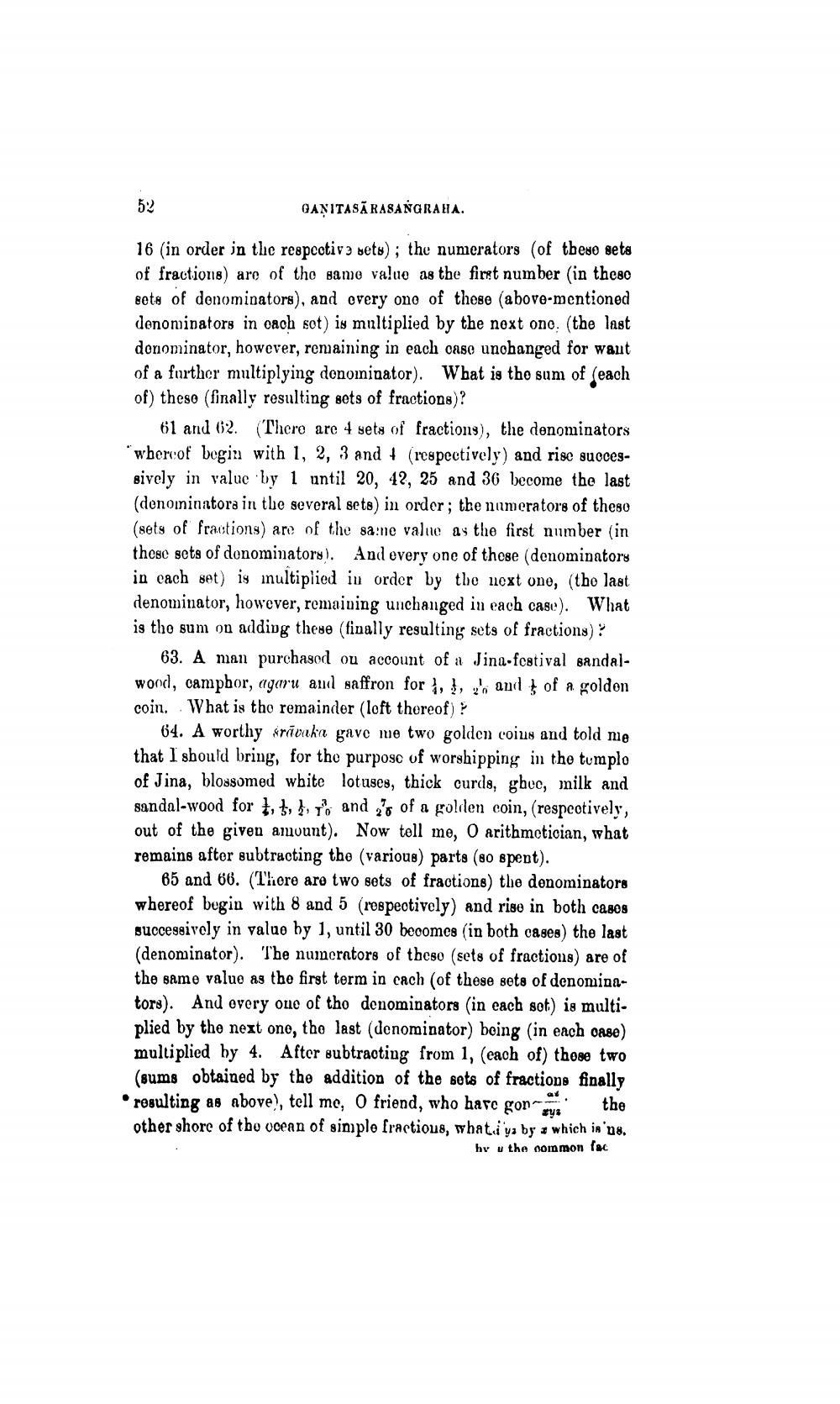________________
52
GANITASĀRASANGRAHA.
16 (in order in the respectiva dets); the numerators (of these sets of fractions are of the same value as the first number in theso sets of denominators), and overy one of these (above-mentioned denominators in oach sot) is multiplied by the next one (the last denominator, however, remaining in each case unchanged for want of a further multiplying denominator). What is the sum of (each of) theso (finally resulting sets of fractions)?
61 and 02. (There are 4 sets of fractions), the denominators *wbercof begin with 1, 2, 3 and + (respectively) and rise suocegsively in value by 1 until 20, 42, 25 and 36 become the last (denominatora in the several sets) in order; the numerators of theso (sets of fractions) are of the saine value as the first number (in these sets of denominators). And every one of these (denominators in each set) is multiplied in order by the next one, (the last denominator, however, remaining unchanged in each case). What is the sum on addivg these (finally resulting sets of fractions) ?
63. A man purchasod ou account of a Jina-festival sandalwood, camphor, agaru and saffron for,., and of a goldon coin. What is tho remainder (loft thereof)?
64. A worthy srāvaka gave me two golden coins and told me that I should bring, for the purpose of worshipping in the tumplo of Jina, blossomed wbite lotuses, thick curds, ghee, milk and sandal-wood for }, }, }, and is of a golden coin, (respectively, out of the given amount). Now tell me, O arithmetician, what remains after subtracting the (various) parts (80 spent).
65 and 66. (There are two sets of fractions) the denominators whereof begin with 8 and 5 (respectively) and rise in both cases successively in value by 1, until 30 becomes in both cases) the last (denominator). The numerators of theso (sets of fractions) are of the same value as the first term in cach (of these sets of denominators). And every one of tho denominators (in each sot) is multiplied by the next one, the last (denominator) being (in each oase) multiplied by 4. After subtracting from 1, (each of) those two (sums obtained by the addition of the sets of fractions finally resulting as above), tell me, O friend, who have gone the other shore of the ocean of simple fractious, what iya by which in 'n8.
hy u the oommon fac




